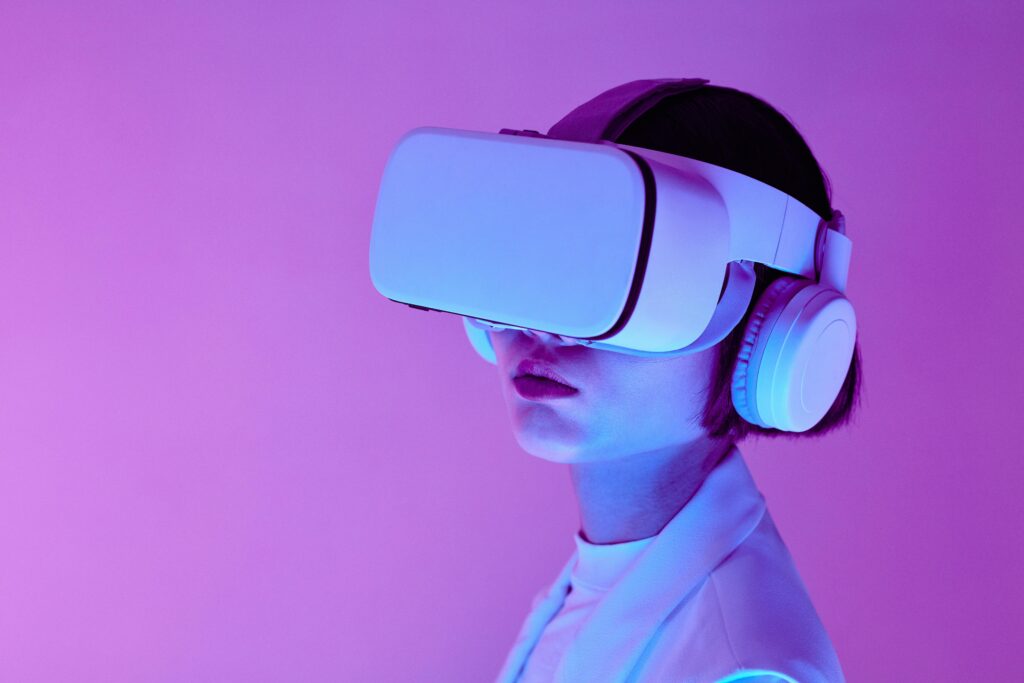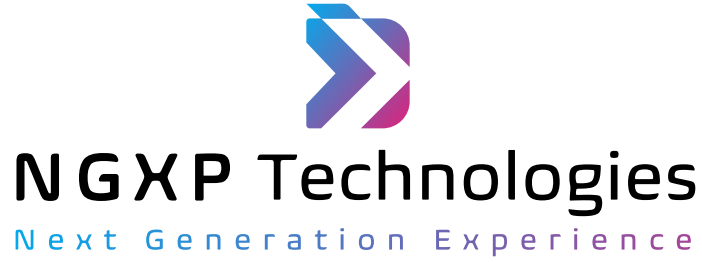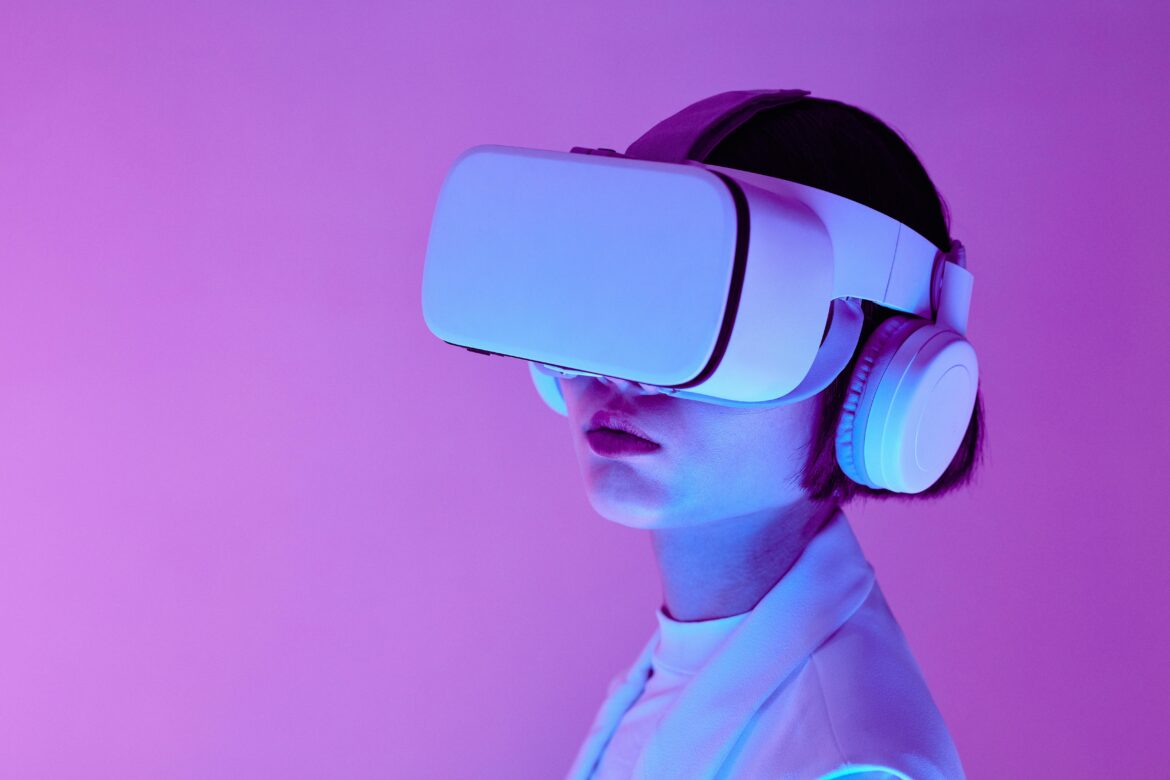 Augmented reality (AR) and virtual reality (VR) have moved far beyond their early days as experimental or novelty technologies. By 2025, they will be practical, widely adopted tools that are transforming both gaming and education. What sets this year apart is not a single revolutionary app or device, but the convergence of multiple advancements that make immersive experiences more effective, scalable, and engaging than ever. First, hardware improvements—such as lighter, more comfortable headsets, wearable smart glasses, and advanced haptic peripherals—are reducing barriers to adoption and enabling more natural interaction with digital content.
Augmented reality (AR) and virtual reality (VR) have moved far beyond their early days as experimental or novelty technologies. By 2025, they will be practical, widely adopted tools that are transforming both gaming and education. What sets this year apart is not a single revolutionary app or device, but the convergence of multiple advancements that make immersive experiences more effective, scalable, and engaging than ever. First, hardware improvements—such as lighter, more comfortable headsets, wearable smart glasses, and advanced haptic peripherals—are reducing barriers to adoption and enabling more natural interaction with digital content.
Second, AI-powered tools are revolutionising content creation and personalisation, allowing developers and educators to generate dynamic environments, adaptive lessons, and interactive experiences at unprecedented speed. Finally, real-world adoption programs are taking off in classrooms, training centres, and studios, demonstrating tangible results in learning outcomes and player engagement. These developments collectively signal that 2025 is a pivotal year, where AR and VR are not just innovative experiments but integral technologies shaping how we learn, play, and interact in immersive digital spaces.
What’s New in 2025 — The Short Version
- Spatial computing goes mainstream. Immersive content is increasingly treated as spatial computing — interactions in 3D space rather than “screens only.” This is leading institutions and studios to plan for permanent XR workflows and curricula.
- AI + XR = smarter, personalised experiences. AI is being embedded into XR authoring (auto-generation of scenes, adaptive tutors, AI NPCs), which scales content creation and tailors learning pathways. Higher-ed and workforce programs are explicitly adopting XR+AI for skills training.
- Hardware roadmap changes, but hardware keeps improving. Companies are iterating toward lighter, more wearable headsets and glasses; there’s also renewed competition around “smart glasses” vs full mixed-reality headsets. Product strategy shifts this year are influencing what developers prioritise (portability, battery, on-device AI).
- Market growth & monetisation. Analysts and industry blogs project strong growth for VR gaming and XR applications in education and enterprise through 2025 — studios are investing in cross-platform XR titles and subscription models.
Hardware & Industry Moves (2025 Snapshot)
In 2025, AR and VR hardware will be evolving rapidly to support more immersive, practical experiences. Companies are focusing on lighter, more wearable headsets, smart glasses, and improved haptic devices, making XR technology more accessible for both gaming and education. At the same time, AI-powered tools are streamlining content creation, allowing developers to build richer, more interactive worlds faster. These shifts are driving wider adoption, enabling studios and educational institutions to implement XR solutions with greater ease and scalability.
| Vendor / Topic | What Changed in 2025 | Impact on Gaming | Impact on Education |
| Spatial computing (industry trend) | Move from experimental XR to integrated spatial workflows and research hubs | More studios produce spatial-native game mechanics (3D UI, environment interactions) | Universities setting up spatial computing hubs & XR curricula |
| Apple / Vision strategy | Strategic shift toward lighter smart glasses & AI features (roadmap changes in 2025) | Potential re-focus away from heavyweight MR titles toward companion experiences | Opportunity for lightweight AR learning aids and notifications rather than full-immersion labs |
| Meta / Ray-Ban & Quest lines | Continued investment in wearables & Quest family iterations (performance + social features) | Social VR and cross-play experiences are expanding | Affordable headsets enable more classroom pilots |
| Haptics & peripherals | Lighter, more realistic haptics appear in peripherals and sim rigs | Improved immersion for simulation and multiplayer tactile feedback | Better training fidelity for medical/technical skills |
| AI tools for XR dev | Generative tools speed content creation (scenes, NPCs, assessment logic) | Lower dev cost, more indie XR games | Rapid creation of adaptive lesson modules and virtual labs |
Use-Cases, Evidence & Outcomes (Gaming + Education)
AR and VR are transforming both gaming and education by offering immersive, practical experiences. In education, virtual labs, medical simulations, and interactive field trips allow students to engage safely and retain knowledge more effectively, while microlearning AR overlays provide on-the-job guidance in vocational training. In gaming, social VR and co-op experiences create persistent, interactive worlds that boost engagement and collaboration.
Across both sectors, these technologies improve outcomes, enhance engagement, and provide measurable benefits. As adoption grows, immersive experiences are increasingly recognised as essential tools for learning, skill development, and entertainment.
| Use-Case | Example Benefit | Adoption Notes |
| Virtual labs (chemistry, biology) | Safe, repeatable experiments; lowers logistics cost | Universities and XR startups are deploying lab modules and pilots in 2025. Mapping to the curriculum is emphasised. |
| Surgical/medical simulation | Faster skill acquisition, lower risk, standardised assessment | Healthcare programs integrating XR sims; XR+AI enables adaptive difficulty. |
| Field trips & history experiences | Immersive context increases engagement & retention | Virtual campus tours and immersive admissions experiences are expanding. |
| Social VR & co-op gaming | Persistent worlds, social spaces, and cross-platform play grow engagement | Game studios invest in social VR features and subscriptions. |
| Microlearning AR overlays | On-the-job guides, label overlays, step-by-step AR instructions | Industrial and vocational training pilots show improved task completion rates. |
Practical Takeaways — For Educators and Game Makers
AR/VR adoption in 2025 calls for a balanced, practical approach. Educators should begin with pilot projects in subjects where immersive learning adds real value, focusing on cross-device accessibility and ensuring teachers are well-prepared to guide students. Developers, on the other hand, should prioritise portability and scalability, using AI tools to speed up content creation and deliver adaptive, engaging experiences. By aligning innovation with clear goals, both educators and game makers can unlock the true potential of immersive technologies.
For Educators
The integration of AR and VR in education works best when implemented gradually and purposefully. Start with pilot subjects where spatial visualisation and immersion bring clear value, such as STEM labs, medical training, or vocational skill-building. Always ensure that XR activities are mapped directly to learning objectives rather than used as a novelty, so that technology enhances outcomes rather than distracts. To maximise reach, focus on cross-device compatibility — WebXR, mobile AR, or lightweight headsets — which allows broader access before committing to large-scale hardware investments. Finally, prepare educators with proper training, lesson planning, and scaffolding, as immersive tools require guided facilitation to truly impact student performance.
For Game Developers
Developers should design with portability and scalability in mind, ensuring games and experiences work across devices, from mobile AR to premium VR headsets. Leveraging AI-assisted development tools can streamline the creation of virtual worlds, generate NPC behaviours, and tailor adaptive difficulty levels that respond to player performance. Beyond entertainment, game studios should explore opportunities in the education market, offering subscription-based licensing, teacher dashboards, and classroom-friendly modes. This opens new revenue streams while showcasing the value of gaming technology as a tool for learning, collaboration, and engagement.
Final Thoughts
2025 marks a turning point where AR and VR are no longer seen as futuristic experiments but as essential tools driving strategic adoption in both gaming and education. The rise of spatial computing is changing how people interact with digital content, while AI integration makes experiences smarter, more personalised, and easier to create at scale. For educators, this means moving beyond demonstrations to structured pilots that directly improve learning outcomes, enhance student engagement, and provide measurable academic benefits. For developers, it’s the opportunity to design cross-platform, accessible experiences that merge entertainment and learning while leveraging AI to reduce costs and accelerate production. Ultimately, the next phase of AR/VR will focus on impact and scalability, bringing immersive technology into everyday classrooms and gaming ecosystems worldwide.
FAQs
- What is the difference between AR and VR in education and gaming?
AR overlays digital elements onto the real world, while VR creates fully immersive virtual environments. AR enhances real-world learning or gameplay, and VR offers complete immersion in simulations or games. - How is AI changing AR/VR experiences in 2025?
AI personalises and adapts AR/VR content, creating dynamic lessons, adaptive challenges, and smarter NPC behaviours, improving engagement in both education and gaming. - Do I need expensive hardware to use AR/VR in classrooms or gaming?
Not necessarily. Many AR/VR solutions now work on mobile devices or lightweight smart glasses, making immersive experiences accessible without high-cost headsets. - What are the main benefits of AR/VR in education?
AR/VR boosts engagement, knowledge retention, and practical skills through virtual labs, simulations, and interactive field trips, offering safe and repeatable learning experiences. - How is the AR/VR gaming market evolving in 2025?
The market is growing rapidly with social VR, cross-platform play, AI-driven content, and subscription models, delivering more immersive and interactive gaming experiences.

